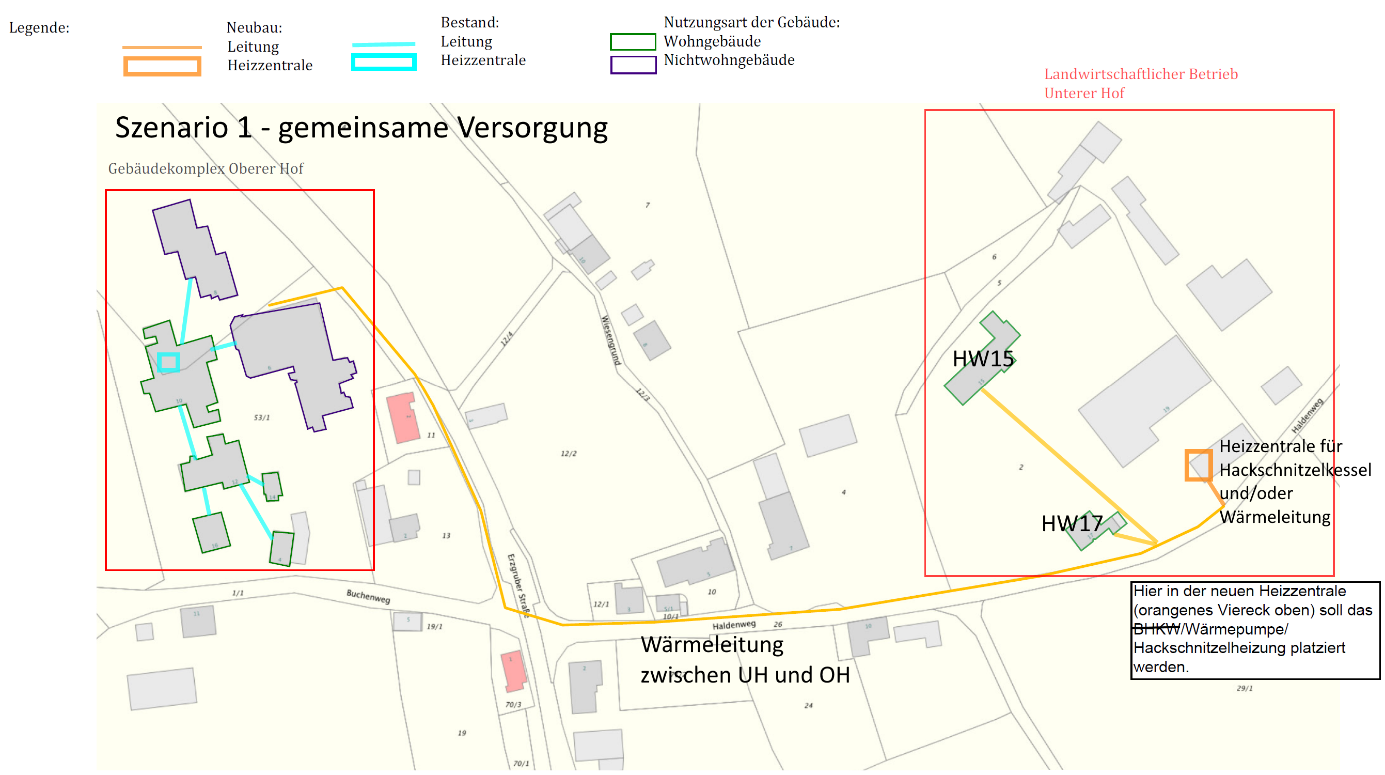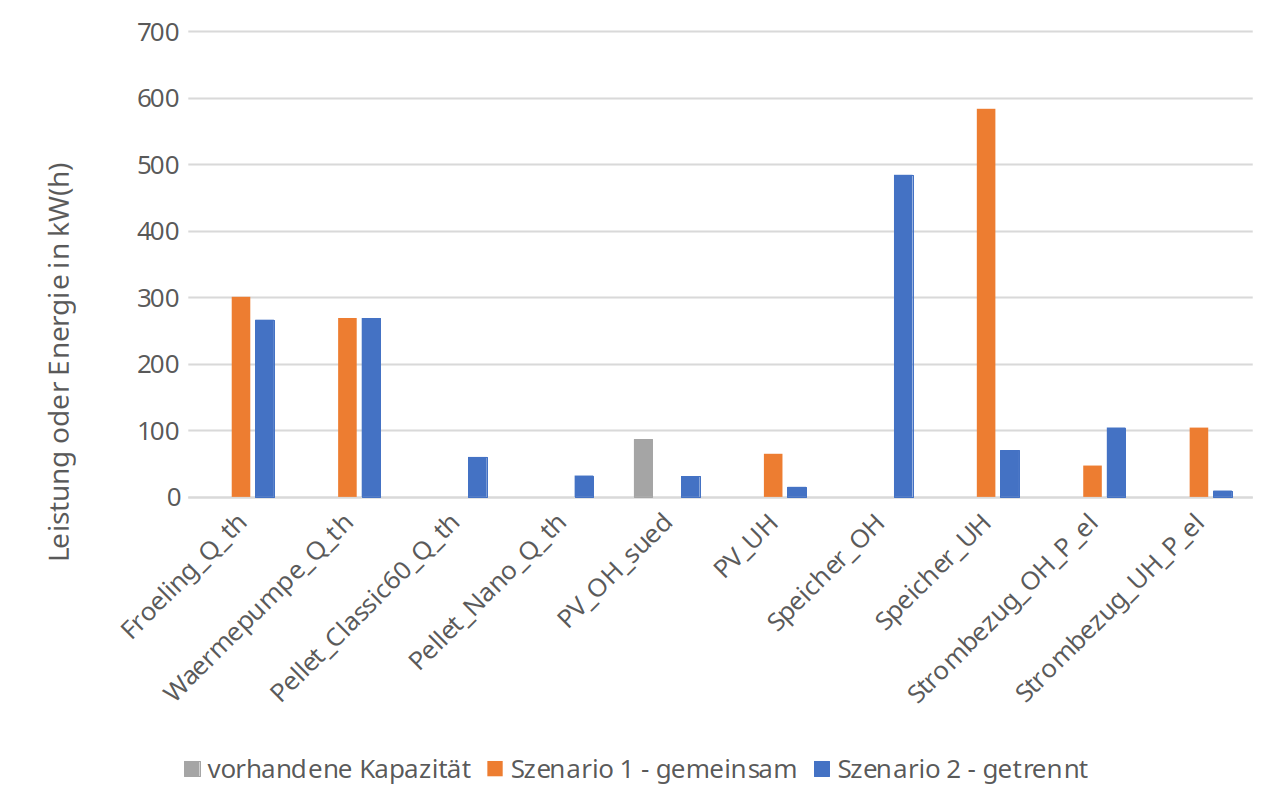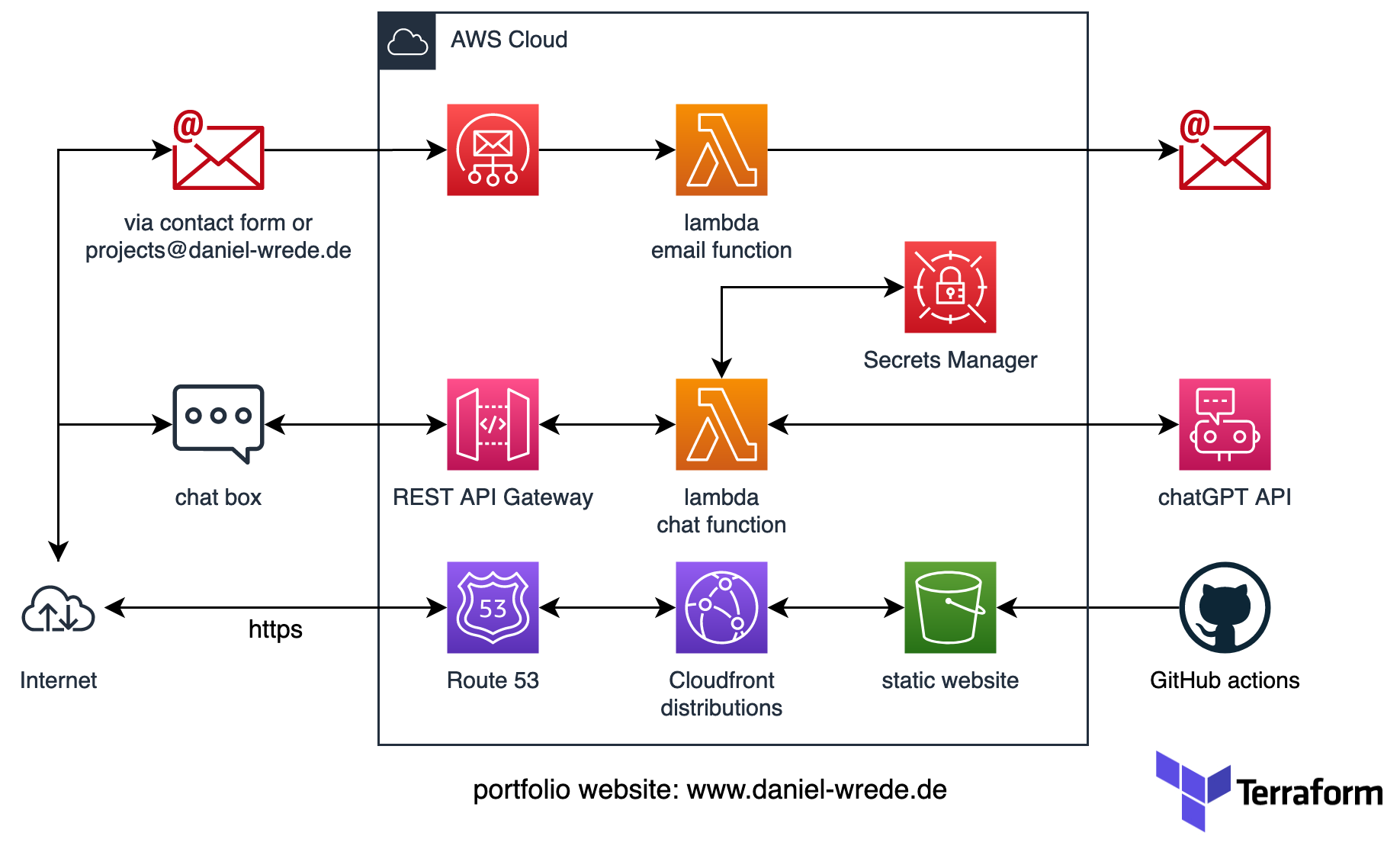Energy Concept for the Sonnenwald Community
Project Period: July 2022 – November 2022
Development of a sustainable energy concept for a plant with 900 kW of thermal capacity to reduce CO₂ emissions and lower costs.
Project Scope
The Sonnenwald community, consisting of approximately 70 residents, is located in Schernbach in the northern Black Forest. The energy concept addressed two main areas:
- Upper Farm: The main area of residential buildings, an industrial kitchen, a gymnasium, workshops, a former swimming pool, and an existing district heating network.
- Lower Farm: Two residential buildings (one used for seminars) and unused, unheated barns and agricultural facilities.

Figure 1: Scenario 1 – Shared Supply. Created based on a thesis by Daniel Schaake.
Initial Situation
The previous heat supply was based on a central 900 kW oil heating system at the Upper Farm and decentralized oil heaters at the Lower Farm. The goal was to develop a sustainable alternative. The analysis showed that wood chips were the most ecologically viable energy source. Options such as energy wood from the forest or paper sludge were excluded due to technical challenges. Photovoltaic surfaces were limited.
Energy Supply Scenarios
As part of the SmartBioGrid research project (TU Dresden, Institute of Power Engineering), two scenarios were examined:
1. Scenario 1 – Shared Supply
- Heating center at the Lower Farm
- Heat pipeline to the Upper Farm
- Use of PV surfaces at the Lower Farm
- Advantages: centralized energy supply, optimized land use
- Disadvantages: heat losses, construction effort for heat and electricity pipelines
2. Scenario 2 – Separate Supply
- Heating center at the Upper Farm for the existing district heating network
- Pellet heating for the Lower Farm
- Advantages: decentralized supply, less construction effort
- Disadvantages: limited space at the Upper Farm
Technologies Compared
- Wood chip heating
- Heat storage for Upper and Lower Farms
- Heat pump
- Additional PV systems (depending on scenario)
- Pellet heating (only for separate supply)
Optimization was carried out using the FlixOpt optimization framework (TU Dresden).
Results
The optimization results for Scenario 1 and Scenario 2 are shown in the figure below. Both scenarios rely on a combination of a combined heat and power unit (CHP) and a heat pump.
- Scenario 2 – Separate Supply: The buildings at the Lower Farm are each equipped with a pellet heater.
- Scenario 1 – Shared Supply: The PV surfaces of the Lower Farm are extensively used to provide the generated electricity for the heat pump and other consumers at the Upper Farm.
The available PV surfaces were only partially used and installed exclusively in a southern orientation in both variants.

Figure 3: Technology Comparison. Created based on calculation results in Excel.
Decision of the Sonnenwald Community
Due to comparable costs, less construction effort, and bureaucratic hurdles for the heat and electricity pipelines, the community decided on Scenario 2 – Separate Supply.
| Cost Type | Scenario 1 – Shared | Scenario 2 – Separate |
|---|---|---|
| Investment Costs | €42,965 | €34,913 |
| Operating Costs | €64,620 | €69,093 |
| Total Costs | €107,585 | €104,006 |
Reasons for the small differences:
- Heat losses in the pipeline between the farms
- Higher construction effort in Scenario 1
- PV use at the Lower Farm was omitted in Scenario 1
Further information and detailed results are available in the project report by TU Dresden: SmartBioGrid.
